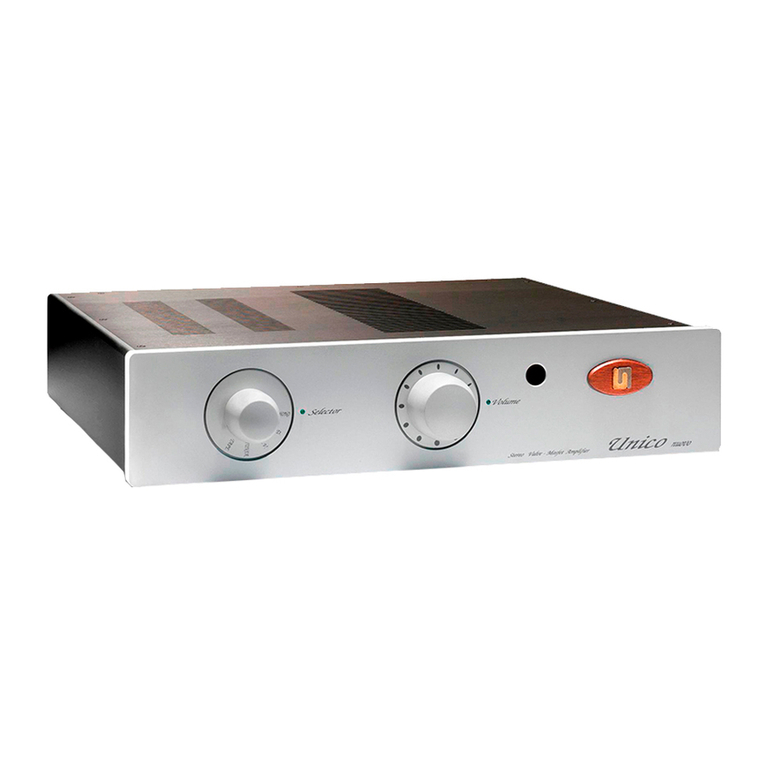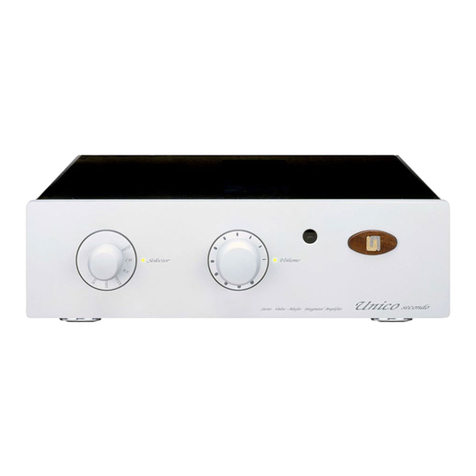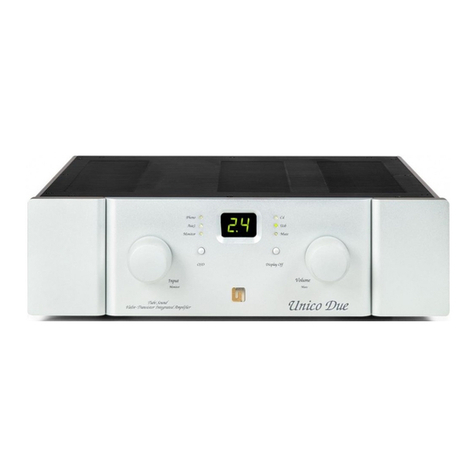CONNECTING INPUTS AND OUTPUTS
Situated on the rear panel of the Sinfonia are the input and
output sockets.
IMPORTANT !
Ensure that all other items of equipment to be connected to
the amplifier are switched off before making the
connections.
Do not insert the amplifier AC mains cord until all input
and loudspeaker connections are securely made.
To avoid the possibility of hum and noise, it is good practice
to ensure that all connections to and from the amplifier are
clean and tight, and that all cable runs are neat and tidy.
For best results, AC mains cables should not be placed
alongside signal or loudspeaker cables.
Using RCA phono interconnects of suitable quality, connect
the various sources (CD, tuner, phono) to the corresponding
inputs of the amplifier.
On the rear panel of the unit is also located a power supply
plug for the unit Simply Phono by Unison Research.
The power supply circuit has fuses not accessible externally,
whose characteristics are listed at the end of this manual.
Remember when connecting the loudspeaker cables to the
amplifier output terminals to respect the correct phase (red =
+/black = -) for each channel. With the double loudspeaker
outputs provided on the Sinfonia it is possible to connect to
loudspeakers using bi-wiring, (provided of course that the
loudspeakers are fitted with two sets of input terminals). Note
that the upper and lower loudspeaker sets of output terminals of



































